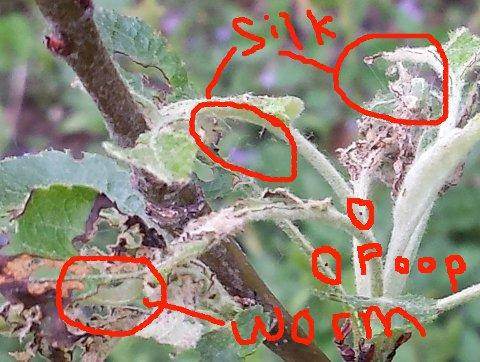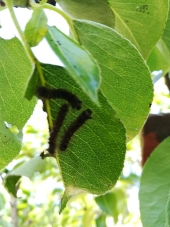
 2
2





 2
2











 2
2








 2
2









 1
1




List of Bryant RedHawk's Epic Soil Series Threads We love visitors, that's why we live in a secluded cabin deep in the woods. "Buzzard's Roost (Asnikiye Heca) Farm." Promoting permaculture to save our planet.
 1
1




 3
3




Mediterranean climate, hugel trenches, fabulous clay soil high in nutrients, self-watering containers with hugel layers, keyhole composting with low hugel raised beds, thick Back to Eden Wood chips mulch (distinguished from Bark chips), using as many native plants as possible....all drought tolerant.
 4
4




 1
1




“Enough is as good as a feast"
-Mary Poppins

 6
6




 1
1




 3
3




Joseph Lofthouse wrote:
I endure a tremendous amount of peer pressure for my decision.
Pecan Media: food forestry and forest garden ebooks
Now available: The Native Persimmon (centennial edition)
 2
2




Malathion is considered safe after it dries, too

Mediterranean climate, hugel trenches, fabulous clay soil high in nutrients, self-watering containers with hugel layers, keyhole composting with low hugel raised beds, thick Back to Eden Wood chips mulch (distinguished from Bark chips), using as many native plants as possible....all drought tolerant.




Mediterranean climate, hugel trenches, fabulous clay soil high in nutrients, self-watering containers with hugel layers, keyhole composting with low hugel raised beds, thick Back to Eden Wood chips mulch (distinguished from Bark chips), using as many native plants as possible....all drought tolerant.









Cristo Balete wrote:Spinosad is scary stuff. It doesn't select for what it kills when it is wet, it kills honey bees and all the other thousands of pollinating insects. They are having enough trouble as it is. Bees are out earlier than we are, and are working hard by the time we show up with spray. Even if we spray at night, some liquid could still be present in the early morning. Drying times on drops of liquid in the shade of leaves, branches, flowers, trees, etc., is random, especially in humid climates.
The claim about Spinosad is that it's safe for us and safe after it dries, and who knows how long that really takes when bees are all over every tiny surface. Spinosad involves two types of bacteria that was found on an isolated island, and is now spread throughout the world way too fast for natural protections to have developed.
Here's some info on it from UC Davis
http://www.ipm.ucdavis.edu/TOOLS/PNAI/pnaishow.php?id=65
Toxicity Level III for honey bees
Malathion is considered safe after it dries, too.
"There is nothing, Sir, too little for so little a creature as man. It is by studying little things that we attain the great art of having as little misery and as much happiness as possible." - Samuel Johnson




Mediterranean climate, hugel trenches, fabulous clay soil high in nutrients, self-watering containers with hugel layers, keyhole composting with low hugel raised beds, thick Back to Eden Wood chips mulch (distinguished from Bark chips), using as many native plants as possible....all drought tolerant.










“Enough is as good as a feast"
-Mary Poppins




Mediterranean climate, hugel trenches, fabulous clay soil high in nutrients, self-watering containers with hugel layers, keyhole composting with low hugel raised beds, thick Back to Eden Wood chips mulch (distinguished from Bark chips), using as many native plants as possible....all drought tolerant.









Mediterranean climate, hugel trenches, fabulous clay soil high in nutrients, self-watering containers with hugel layers, keyhole composting with low hugel raised beds, thick Back to Eden Wood chips mulch (distinguished from Bark chips), using as many native plants as possible....all drought tolerant.
 2
2




Cristo Balete wrote:Spinosad is a very unfortunate addition to the Organic Materials List. But not everyone agrees with that list. Is that list the standard for a permaculurist?
How permies.com works
What is a Mother Tree ?
















List of Bryant RedHawk's Epic Soil Series Threads We love visitors, that's why we live in a secluded cabin deep in the woods. "Buzzard's Roost (Asnikiye Heca) Farm." Promoting permaculture to save our planet.










 1
1




“Enough is as good as a feast"
-Mary Poppins




















List of Bryant RedHawk's Epic Soil Series Threads We love visitors, that's why we live in a secluded cabin deep in the woods. "Buzzard's Roost (Asnikiye Heca) Farm." Promoting permaculture to save our planet.








Bryant RedHawk wrote:
I would probably put my efforts into soil health and thus improve the tree's health so they can spring back with new growth and I would hand pick, the trees are small so this is not so hard to do, except for the probable need of picking over several days to get rid of them all.

|
When evil is afoot and you don't have any arms you gotta be hip and do the legwork, but always kick some ... tiny ad:
Learn Permaculture through a little hard work
https://wheaton-labs.com/bootcamp
|



